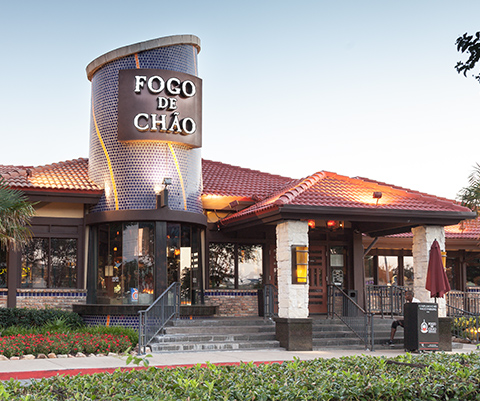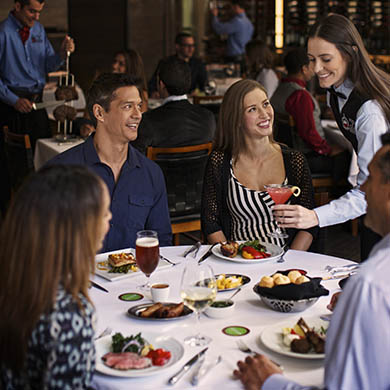The Culinary Landscape of Southeastern Brazil

Southeast Brazil is easily among the most diverse culinary regions in the entire country. Chefs from city to city vary greatly on preferred flavor palettes, styles of cooking and even presentation styles. Chefs in Rio, for instance, have their own cooking style – rice must be loose and beans must be black; they use minimal fat and typically add a subtle hint of hot sauce.
Feijoada, a stew made of beans and meats, is largely regarded as the national dish of Brazil and is a particular favorite among the locals in Rio de Janeiro. While the most common beans-meat combination consists of black beans and pork, some regional chefs may swap black beans for brown or red (kidney beans are often used in the northeast regions of Brazil).
Thanks to Arab influence from the late 19th century, falafel is found in abundance across the streets of Rio, São Paulo and others. Pizza and pasta were introduced by the Italians (Sunday night is pizza night in Brazil), while the Japanese brought sushi to the region.
São Paulo, the financial capital of the country, is widely known for its quintessential Brazilian and internationally-themed restaurants. Rice, native produce and spices as well as domestically-raised livestock and poultry dominate their menus, with meals such as cuscuz Paulista (crafted from an assortment of meats and vegetables, cornmeal and manioc meal) and lombo com farofa (roast pork loin with toasted manioc) proving to be popular favorites.
In Espírito Santo, seafood, crustaceans and fish dominate culinary tradition. The city is namely known for the seafood stew, moqueca capixaba, which is seasoned with urucu, a pigment that gives the dish a reddish coloring. Torta, or seafood pies, are always high in demand.
Cheese is a major player in the state of Minas. At nearly every dinner table, queijo minas, a cheese that’s served on toast or with a slice of guava paste, is regularly enjoyed, as is pão de queijo, more commonly known as cheese bread. Jars of doce de leite, a think, sweet mixture of milk and sugar, will likely be found in every cabinet, as well. Preserved fruits are a major player in Minas, and pork and greens are among the most common ingredients used to craft the region’s signature dishes.
Regional Flavors:
Aipim Frito: The Brazilian version of French Fries, the Aipim Frito is made from yuca, a delicious root vegetable.
Bolinhos de Bacalhau: These fried croquettes are made with dried cod and present a unique taste when paired with a refreshing, cold beer.
Bacalhao à Gomes do Sá: This olive oil-baked salt cod is served alongside potatoes, onions, and olive oil. It can also be garnished with olives and cooked eggs for another added layer of flavor.
Camarão com Chuchu: Small-sized shrimp come to life in this tasty stew, complete with a mild flavored squash called chayote.
Couve à Mineira: This delicious side dish features collard greens that have been cut into long, thin strips and then flash-fried with olive oil, salt and garlic for the perfect accompaniment to any entree.
Coxinha: This deep-fried potato cake is generously stuffed with pulled chicken and/or soft, tangy cheese known as Catupiry.
Cozido à Carioca: A dish also known to have a presence in Portugal eateries, this Brazilian version consists of a variety of stewed meats and root vegetables along with plantains.
Cuscuz Paulista: This traditional dish from São Paulo is made with manioc flour, onions, garlic, tomatoes, olives, heart of palm, pork and chicken – all combined in a Bundt cake style mold and refrigerated before being served.
Doce de Leite: This sweet dessert is made from milk (or a boiled can of condensed milk), sugar and baking soda.
Feijão Tropeiro: Often referred to as Cattleman’s Beans, this bean-focused dish is made by sautéing dried beans with smoked pork fat, manioc flour, onion and eggs.
Feijoada Carioca: This bean stew is traditionally served over white rice and Farofa (toasted manioc flour with bacon) and made with unique cuts of meat, including pig’s ears and feet, bacon, smoked pork and beef.
Lombo com Farofa: Pork tenderloin accompanies toasted manioc flour, green onions, parsley, raisins, hard-boiled egg, onions, tomatoes, prunes, and roughly chopped walnuts in this fresh, tasty dish.
Moqueca Capixaba: a variation of seafood stew, or moqueca, which features olive oil instead of palm oil and omits coconut milk. Traditionally prepared in a clay pot, the stew contains flavorful onions, cilantro, chives, tomatoes and urucum (a material created from annatto seed and olive oil).
Pão de Queijo: A popular snack and breakfast item in Brazil, this round cheese bread is made with manioc starch and parmesan cheese, and is incredibly crispy on the outside, yet delightfully soft on the inside.
Pastel de Camarão: This Brazilian-style empanada is made with medium-sized shrimp and has a crispy, crunchy taste.
Tutu de Feijão: Also known as refried beans, this black bean side dish is made with garlic, sausage, bacon bits and toasted manioc flour.






